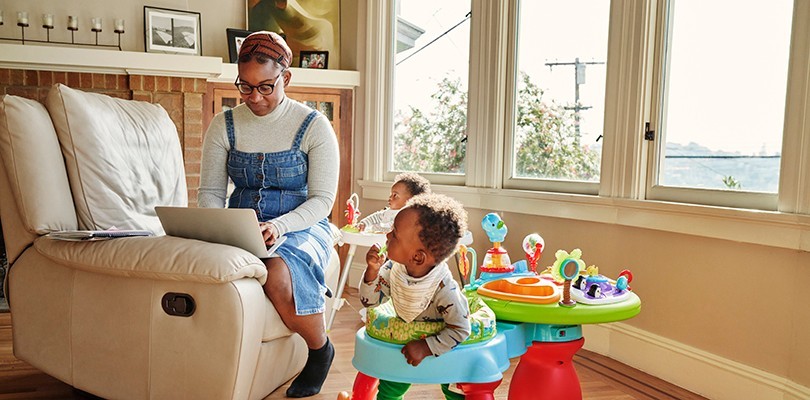What’s Trending: Changing the B2B Rulebook
The conventional wisdom is people are B2B buyers when they’re at work, and B2C consumers at home.
That’s been the presumed split in marketing for decades. You have the supposedly analytical, logic-driven buyers of B2B, and the emotion-influenced consumers for B2C, and never the twain shall meet.
But what happens when most of your buyers are working at home? How do we redraw the lines between B2B and B2C? Were those lines ever as rigid as we thought they were, or has B2B marketing always had an emotional component?
A recent article in Adweek addresses this question with an attention-grabbing headline: Covid-19 Could Lead to the End of B-to-B Brands as We Once Knew Them. In it, Tim Harvey points out that when we’re all using Zoom to talk to our friends and family, and Microsoft Calendar to schedule our afternoon dog walks, the old labels don’t seem to fit.
His conclusion, though, is not that B2B is going away, but that it needs to be redefined. “I hope this shift will inspire agencies to rethink how they treat b-to-b brands,” He says. “These brands may finally get the same cachet and focus as b-to-c brands as we collectively recognize that the end customer is a person, not an institution.”
The current erosion of boundaries between home and business life can be an opportunity for B2B brands to rewrite their playbook. We can use this moment to be more creative, more empathetic, and more fully address the entire person, not just the buyer or consumer.
This week’s roundup features three resources to help B2B brands rewrite their rulebooks.
1. Content Marketing in the COVID-19 Crisis: What the Hospitality Industry Is Teaching Us
Hotel, travel and tourism brands have been hit hard in the current crisis. The way brands like TripAdvisor, AirBnB, and OpenTable are responding can be instructive for all of us.
“B2B marketing isn’t just about getting new business. It can also be about “marketing” to your current clients and customers,” says Amanda Milligan. “When you work with other companies that are suffering financially, your messaging is critical. If you have a healthy partnership, they see the money they spend on your product/services and your brand as an important piece of their success.”
Amanda highlights a video from TripAdvisor’s CEO as an example of empathetic, helpful B2B marketing.
In the end, whether B2B or B2C, the message is the same, says Amanda: “Simple messages of encouragement, camaraderie, and hope can go a long way.”
2. How to Communicate with Your Customers During the COVID-19 Crisis
A crisis of this magnitude seems to demand some kind of brand response: Surely we all have something to say about it, regardless of our industry or vertical. But the urge to say something — anything — is what leads to inboxes flooded with “In these uncertain times…”
Ann Smarty quotes Anita Campbell, Founder and CEO of Small Business Trends: “Send a message just saying ‘How are you doing? Is everyone well there?’ No pressure. No selling. Just a friendly ‘I care about you enough to check in’ message...It’s nice to get a friendly ‘human’ message,” she says. It’s easy to see how an attempt at genuine human connection is better than a generic “here’s how our policies have changed” message.
In addition to the emotional component, Ann recommends that brands concentrate on how they can be useful for customers right now. She offers multiple examples of brands that have created timely resource hubs, whether on their own sites or on dedicated social media accounts. If your offering targets a business that’s disproportionately affected by the crisis, you have the opportunity to be a trusted advisor and helper.
Ultimately, says Ann, “Your messaging should make each of your customers feel that they are not alone.” That type of human connection used to be rare in B2B, but it’s the clear way forward for all of us.
3. The Show Must Go On! Or… Must It?
As we rewrite the rules of B2B marketing, our tactics will need to evolve, too. Physical events have been a mainstay for B2B in the past few decades. Trade shows and conferences have grown ever larger. Most of us have at least one event a month, if not more. What should our strategy look like when large events are off the table for the foreseeable future?
Joel Harrison reports on a recent virtual roundtable with B2B marketing leaders, in which they discussed the potential future for events. All agreed that conferences with thousands of attendees were likely to be canceled at least through the end of 2020, if not beyond.
While all of the leaders in attendance are actively working on shifting their strategies, Joel says there is no single right way forward: “Most B2B marketers are using this crisis as an opportunity to review their existing events strategy. Many expressed surprise at the sheer number of events that they were doing. Some expect to consolidate lots of smaller events into a bigger summit; others are trying to fragment something bigger and disrupt expectations.” Online events can help fill the void.
As you contemplate how to reconfigure your event marketing strategy, Joel says, it’s important to accurately assess the current situation and be open to change. “Whatever your precise circumstances, this situation requires pragmatism, flexibility and open-mindedness to enable the team to take the necessary steps,” he says.
Rewrite Your Rulebook
While COVID-19 is a temporary crisis, it’s bringing about changes that will last long after we have the outbreak under control. B2B marketers need to be agile and creative right now, to rewrite the rules for reaching people in their roles as buyers and consumers alike.
Get more marketing advice every day: Subscribe to the LinkedIn Marketing Solutions blog.
Related articles





